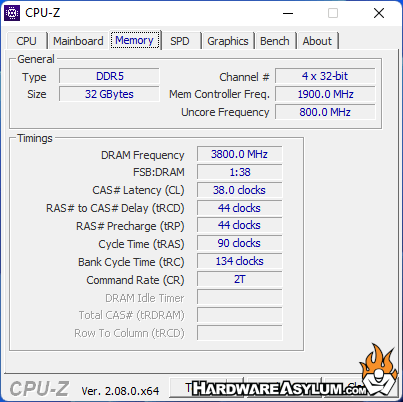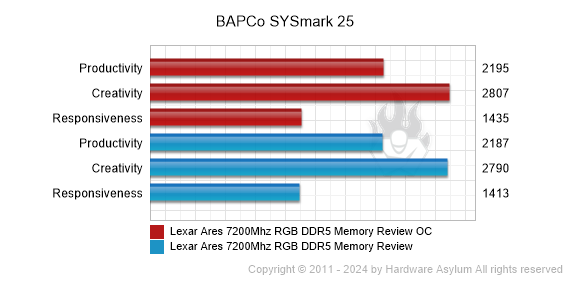Lexar Ares 7200Mhz RGB DDR5 Memory Review
Author: Dennis GarciaBenchmarks - Overclocked
As with all of our reviews, we pit the default speed system against the overclocked one in a head-to-head byte match. The only difference is that with our memory reviews we leave the base system (CPU, Chipset etc..) at default speeds so that the only thing we are changing is the memory module. You can see this with the Sandra CPU Tests and at that point the only performance advantage is from increased memory performance.
There are different approaches to overclocking memory and while you may not get an extra 25FPS in your games the increased bandwidth and lower latencies can often unlock the potential for better system efficiencies.
The effective overclock for these tests was 7600Mhz and to attain these clocks the XMP profile remained enabled with memory frequency being raised to 7600Mhz. Our motherboard bios automatically lowered the timings so they were tweaked to the final CL38-44-44-90 settings used for these tests. Voltage was already at 1.4v and remained unchanged.








Memory overclocking is a pretty arduous task of trial and error. As with most overclocking there is a balance that we want to maintain including the relationship between temperature, voltage and frequency. Given that your system memory also drives CPU performance it is not uncommon to see performance go down with an overclock that has been pushed too far or has a mismatched setting.
Much to my surprise these Lexar ARES DDR5 memory modules can do a bit of overclocking provided that you are willing to experiment a bit. Normally, when an XMP profile set there is very little you can do when it comes to timings and voltage adjustments. However, given the 1.4v rating we are given the opportunity to move some things around and get a minor bump in speed.
Most DDR5 modules will be voltage locked which can limit overall speeds. This is done for warranty reasons but doesn’t mean it will limit your tweaking options. For our benchmarks the overclock seemed impressive but didn't gain us much in our Real-World benchmarks. For what it is worth I would simply set the XMP profile and enjoy a super speedy system.

